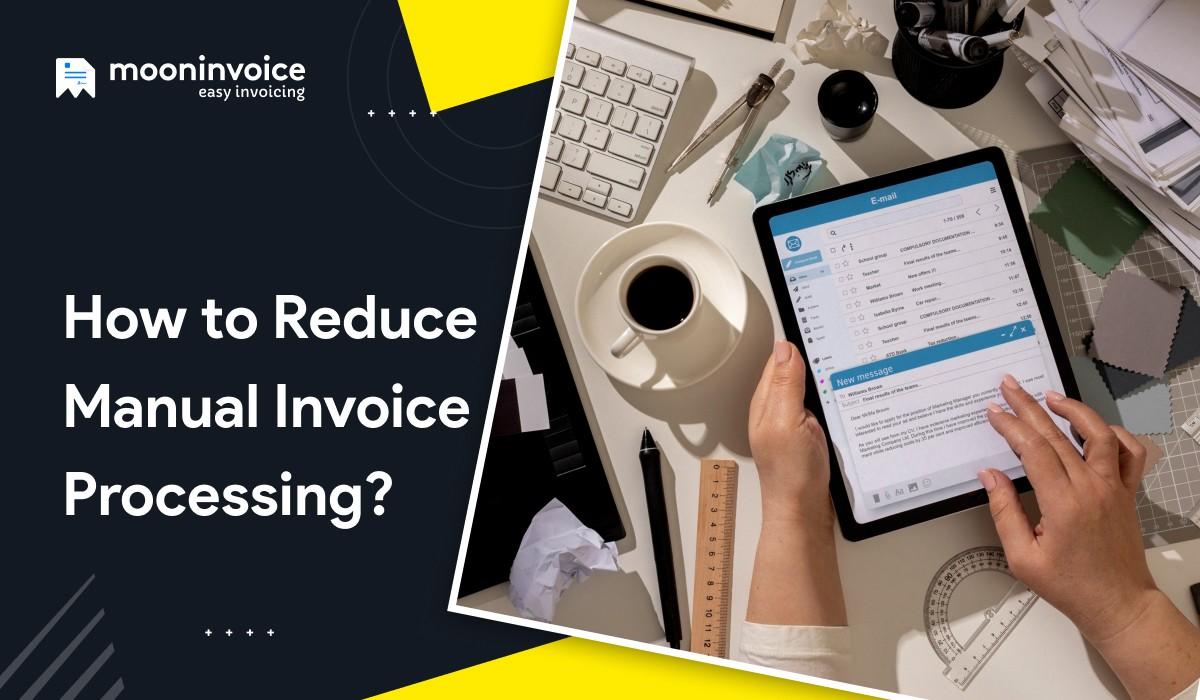Difficulties in managing your business expenses? Well, you are not alone. Every small or large business faces intricacies in organizing its finances, especially when tracking operating expenses and non-operating expenses. Unlike operating expenses, non-operating expenses are not directly tied to your production process but can greatly impact your bottom line.
Therefore, whether it’s operating expenses or non-operating expenses, you need to track them accurately to stay on top of your business finances. If you are stepping into the shoes of a business owner, here is our guide on what are non-operating expenses that will help you see the bigger picture of your business’s financial health.
Let’s delve deeper to learn more about non-operating expenses.
What Is a Non-Operating Expense?
Non-operating expenses are business costs not linked to your manufacturing process or main activities. Businesses usually write off non-operating expenses while assessing the business performance to identify market trends and establish new strategies.
Another reason for separating non-operating expenses from other expenses is to avoid inaccuracy that might occur due to one-time expenses. Common examples of non-operating expenses are interest paid on loans and losses suffered due to the sale of the company’s assets.
Non-operating Expenses Examples
Imagine you own a cafe where you sell hot coffee, sandwiches, and cookies. You took a loan from a federal bank to renovate the cafe and started paying interest on it every month. Additionally, you also invest in stocks and simultaneously, suffer a loss on your recent investment.
Here, the interest you paid and investment losses are considered non-operating expenses. Both of these expenses have nothing to do with your core operations and as a result, they fall under the non-operating expense category.
How to Calculate Non-operating Expenses?
Here’s how to calculate non-operating expenses in the right way in order to simplify your accounting tasks.
1. Know Expense Categories
Firstly, you need to separate operating and non-operating business expenses. So, determine expenses that are not connected to your core operations. Mostly interest on business loans, legal fees for dispute settlement, or business losses are referred to as non-operating expenses.
Identifying each of them will help you know how it impacts your financial budget. In case you classify loan interest as an operating expense, then it may not give a clear picture of the business’s financial health.
2. Check Financial Records
The next step is to generate and scan your financial records such as balance sheets or income statements. You need accurate documents to know whether the money you spent was for business-related activities.
In this process, you can get help from automated software like Moon Invoice which maintains documents in the cloud storage, eliminating the need to collect them manually. The software will make sure you generate accurate financial reports in less than a minute.
3. Calculate the Total
So, now you have non-operating expenses in hand. Use the below non-operating expense formula to calculate the total amount.
Sum of Identified Non-Operating Expenses (Interest + losses + Legal fees) = Total Non-Operating Expenses
The formula is pretty simple, all you need to do is put together the sum of already identified non-operating expenses and you will get the total sum. The resulting amount is how much your non-operating expenses are, which will help you gauge the business profits.
4. Review & Manage
Since you have figured out the sum of non-operating expenses, analyze it to find the current trends or certain areas where you can cut costs. If you find non-operating costs are high due to legal settlements, then you make effective strategies to lift the customer satisfaction rate and avoid these unnecessary costs. Likewise, you need to monitor these expenses periodically and ensure you run a profitable business.
Track non-operating Expenses Instantly
Choose Moon Invoice to track and manage your operating and non-operating expenses in less than a minute.
Capital Expenses Vs Operating Expenses
Here’s how the capital expenses differ from operating expenses:
| Capital Expenses | Operating Expenses |
|---|---|
| Capital expenditures are investments in acquiring or maintaining long-term assets, from which the business will benefit. | Operating expenses are the ongoing costs required for your day-to-day business operations. Such expenses are necessary to continue revenue-producing activities. |
| Capital expenses enhance the company’s productive capacity, efficiency, or overall value, leading to business expansion and long-term sustainability. | Operating expenses make sure you run daily business operations without any hassle as they are important to keep the business running efficiently. |
| Typically, capital expenses are long-term as they provide value for several years. The cost is linked with multiple financial periods through depreciation or amortization. | Unlike capital expenses, OpEx expenses are short-term and occur within the same financial period in which they are used. They do not add value beyond the period in which they are paid. |
| Capital expenditures are recorded as assets on the balance sheet and gradually depreciated for tangible assets or amortized for intangible assets over a specific period. | Operating expenses are fully deducted in the income statement for the particular accounting period, helping you reduce the taxable income. |
Capital Expenses vs Non-Operating Expenses
Capital expenses are one thing and non-operating expenses are completely different. Here’s a quick comparison between them.
| Capital Expenses | Non-operating Expenses |
|---|---|
| Capital expenses are long-term assets that help in business expansion or increase productivity to generate the desired revenue. | Non-operating expenses are not directly associated with the company’s primary business activities. They would result from financial obligations, unforeseen events, or one-time losses. |
| CapEx aims to improve business infrastructure, expand capacity, or upgrade already existing assets for better use. | Non-operating expenses exist due to financial obligations, the interest that you pay on loans, or losses suffered. |
| CapEx gives benefits over multiple years, often leading to a business’s growth. | Such expenses are usually short-term, incurred within a specific accounting period. |
| Buying equipment, land, office space renovation, or purchasing a new vehicle are common examples of capital expenses. | Interest paid, losses due to unforeseen events, or lawsuits are included as non-profiting expenses examples. |
| It is recorded as an asset while generating a balance sheet and later depreciated or amortized according to the type of asset. | Whereas, non-operating expenses are mentioned on the income statement and can be deducted in the same period they occur. |
Common Types of Non-Operating Expenses
Non-operating expenses arise from your financial obligations and are not connected with your daily operations. Here are some types of non-operating expenses.
1. Restructuring costs
Costs incurred for renovating your office space are operating expenses as they are not directly linked with your operations. Reconstruction costs are only one-time expenses and therefore they are considered as non-operating expenses.
2. Interest
Interest payments incurred due to funds borrowed from the federal bank are counted as non-operating expenses. Expenses required to pay interest on loans also come under non-operating expenses. They lower your overall income but are considered tax-deductible.
3. Losses Due to Foreign Exchange
Fluctuations in the currency exchange rate can lead to significant losses, which fall under the non-operating expenses category. Businesses dealing with international transactions often suffer losses due to foreign currency exchange, which is part of non-operating expenses.
4. Lawsuit Settlement
If someone sues your company, then the cost required to settle the dispute can be classified as non-operating expenses. Since these expenses are one-time costs and have no connection with your main operations, they are described as non-operating expenses.
5. Donations to Non-profit Organizations
Funds donated to non-profit organizations are recognized as non-operating expenses. They might enhance the credibility and give tax benefits, but they don’t produce the company’s revenue. Hence, they fall into the non-operating expense category.
Steps to Manage Non-operating Expenses
Follow the below steps to manage non-operating expenses and make sure you allocate funds wisely.
1. Estimate non-operating Expenses
Start conducting thorough cost analysis to predict non-operating expenses to make the financial plan. Utilize past data, see market conditions, and consider predictive analytics to estimate non-operating costs in the near future. Suppose you think your assets will lose value and you need a new asset, then include it in your depreciation expenses. By using such practices, you can make an accurate estimate of non-operating expenses.
2. Use Expense Management Software
Prioritize the use of expense management software over the manual process to automate the way you manage your business expenses. The software keeps the expense details in the cloud storage, making it easier to track and prepare the expense report. Go through the report on the go meticulously before you make any further changes to your strategies.
3. Manage Expenses & Implement a Strategy
Getting the ideal software will make it easy to track and manage expenses, but simultaneously you need to review your business strategies and cut off extra spending. Once you have the expense report in hand, scan it carefully and then make the required changes in your strategies. Also, do variance analysis to uncover how much is the actual expenses compared to the sum of non-operating expenses.
4. Review Expenses Periodically
Since expense management is not just a one-time job, you need to keep assessing the expense metrics continuously. Reviewing such expenses timely will give you deeper insights into your strategies. This way you will not only gain control of non-operating expenses but also accomplish your profit goals early.
How do Non-operating Expenses Affect Income Statements?
On your income statement, non-operating expenses appear below operating income. While they do not impact operating profit, they do lower net income. Since operating expenses and non-operating expenses are listed separately, stakeholders can easily see how much profit you generate from main business operations. So, including non-operating expenses in the income statement not only provides transparency to investors but also helps in planning the next year’s budget effectively.
Read Also: How to Prepare an Income Statement
Let’s take an example:
Suppose your company has an income of $950,000. You incur a foreign exchange loss of $10,000 and pay $50,000 in loan interest. Then, your net income would be $890,000 (950,000−(10,000+50,000)). By taking off non-operating expenses from operating expenses, you will understand the true profitability of your business and can identify external financial risks that may impact overall financial strategies.
Create Expense Report in a Flash
Start managing your business expenses effortlessly using Moon Invoice and create accurate expense reports in less than a minute.
Conclusion
To sum it up, non-operating expenses are necessary costs that have no direct link with your main operations but can impact your business’s financial health. Tracking and managing them using reliable software can make a real difference, allowing you to operate a profitable business. On a conclusive note, whether it is operating expenses or non-operating expenses, you need to manage them efficiently.
For that, you can get expense management software like Moon Invoice that aids you in keeping expense data safe in the cloud and wipes off your unnecessary workloads. Apart from expense management, you can also make professional invoices, invoice tracking, online payments, business reports, and much more. Avail a free trial for limited days.



















